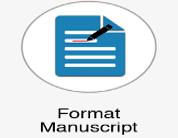Exploration of the polypropylene degrading bacteria candidates from the passive zone of the Supit Urang landfill in Malang city by using the next generation sequencing (NGS) method
Abstract
Keywords
Full Text:
View Full TextReferences
Carpenter E, Smith K. Plastics on the Sargasso sea surface. Science. 1972;175(4027):1240-1.
Chamas A, Moon H, Zheng J, Qiu Y, Tabassum T, Jang J, et al. Degradation Rates of Plastics in the Environment. ACS Sustain Chem Eng. 2020;8(9):3494-511.
Jain K, Bhunia H, Sudhakara Reddy M. Degradation of polypropylenepoly-L-lactide blend by bacteria isolated from compost. Bioremediat J. 2018;22(3–4):73-90. Available from: https://doi.org/10.1080/10889868.2018.1516620.
Helen A, Uche E, Hamid F. Screening for Polypropylene Degradation Potential of Bacteria Isolated from Mangrove Ecosystems in Peninsular Malaysia. Int J Biosci Biochem Bioinforma. 2017;7(4):245-51.
Moulia E. Analysis of acid sulfate soil bacterial communities from two types of swamps in Kalimantan using Next-Generation Sequencing (NGS) approach; 2019. Not published.
Malek M, Jackowski M, Lasica W, Kadela M. Characteristics of recycled polypropylene fibers as an addition to concrete fabrication based on portland cement. Materials (Basel). 2020;13(8).
Vincent A, Derome N, Boyle B, Culley A, Charette S. Next-generation sequencing (NGS) in the microbiological world: How to make the most of your money. J Microbiol Methods. 2017;138:60-71. Available from: http://dx.doi.org/10.1016/j.mimet.2016.02.016.
Kumar Sen S, Raut S. Microbial degradation of low density polyethylene (LDPE): A review. J Environ Chem Eng. 2015;3(1):462-73. Available from: http://dx.doi.org/10.1016/j.jece.2015.01.003.
Matjai T, Simi T, Medveek N, Bajt O, Dreo T, Mori N. Critical evaluation of biodegradation studies on synthetic plastics through a systematic literature review. Sci Total Environ. 2021;752.
Aminu S, Ascandari A, Laamarti M, Safdi N, El Allali A, Daoud R. Exploring microbial worlds: a review of whole genome sequencing and its application in characterizing the microbial communities. Crit Rev Microbiol. 2023 Nov:1-25.
Anah I, Aniriani G, Sulistiono E. Biodegradation of LDPE (Low Density Polyethlene) Plastic using Winogradsky Columns. J Enviscience. 2020;4(2):96.
Ghosh S, Das A. Metagenomic insights into the microbial diversity in manganese-contaminated mine tailings and their role in biogeochemical cycling of manganese. Sci Rep. 2018;8(1):1-12. Available from: http://dx.doi.org/10.1038/s41598-018-26311-w.
Naveen B, Mahapatra D, Sitharam T, Sivapullaiah P, Ramachandra T. Physico-chemical and biological characterization of urban municipal landfill leachate. Environ Pollut. 2017;220:1-12. Available from: http://dx.doi.org/10.1016/j.envpol.2016.09.002.
Qodriyah N, Sanjaya E, Jatmiko Y, Santoso A, Susanti E. Biodiversity of Polypropylene Degrading Bacteria from Communal Waste Landfill of Probolinggo City and its Potential for Biodegradation of Medical Mask Waste; 2022. Not published.
Jacquin J, Cheng J, Odobel C, Pandin C, Conan P, Pujo-Pay M, et al. Microbial ecotoxicology of marine plastic debris: A review on colonization and biodegradation by the plastisphere. Front Microbiol. 2019;10(APR):1-16.
Klein S, Lorenzo C, Hoffmann S, Walther J, Storbeck S, Piekarski T, et al. Adaptation of Pseudomonas aeruginosa to various conditions includes tRNA-dependent formation of alanyl-phosphatidylglycerol. Mol Microbiol. 2009;71(3):551-65.
Madigan M, Martinko J, Parker J. Brock biology of microorganisms. 11th ed. Upper Saddle River, NJ: Prentice hall; 1997.
Parte A. LPSN - List of prokaryotic names with standing in nomenclature (Bacterio.net), 20 years on. Int J Syst Evol Microbiol. 2018;68(6):1825-9.
Combet-Blanc Y, Kalamba K, Kergoat P. Effect of pH on Bacillus thermoamylovorans growth and glucose fermentation. Appl Environ Microbiol. 1995;61(2):656-9.
Auta H, Emenike C, Fauziah S. Screening of Bacillus strains isolated from mangrove ecosystems in Peninsular Malaysia for microplastic degradation. Environ Pollut. 2017;231:1552-9. Available from: https://doi.org/10.1016/j.envpol.2017.09.043.
Auta H, Emenike C, Jayanthi B, Fauziah S. Growth kinetics and biodeterioration of polypropylene microplastics by Bacillus sp. and Rhodococcus sp. isolated from mangrove sediment. Mar Pollut Bull. 2018;127:15-21.
Arkatkar A, Arutchelvi J, Bhaduri S, Uppara P, Doble M. Degradation of unpretreated and thermally pretreated polypropylene by soil consortia. Int Biodeterior Biodegrad. 2009;63(1):106-11. Available from: http://dx.doi.org/10.1016/j.ibiod.2008.06.005.
Arkatkar A, Juwarkar A, Bhaduri S, Uppara P, Doble M. Growth of Pseudomonas and Bacillus biofilms on pretreated polypropylene surface. Int Biodeterior Biodegrad. 2010;64(6):530-6. Available from: http://dx.doi.org/10.1016/j.ibiod.2010.06.002.
Bakke T, Klungsøyr J, Sanni S. Environmental impacts of produced water and drilling waste discharges from the Norwegian offshore petroleum industry. Mar Environ Res. 2013;92:154-69. Available from: http://dx.doi.org/10.1016/j.marenvres.2013.09.012.
Thiel T, May V, Kalk M, Alters S, Alters B, OBrian J. Science in the real world: Microbes in action. Introd to Bact. 1999:1-8.
Rudiyansyah A, Wahyuningsih N, Kusumanti E. Effect of Temperature, Humidity, and Sanitation on the Presence of Eschericia Coli and Salmonella Bacteria in Chicken Cages at Broiler Farms in Karanggeneng Village, Semarang City. J Kesehat Masy. 2015;3(2):196-201.
Ascandari A, Aminu S, Safdi N, El Allali A, Daoud R. A bibliometric analysis of the global impact of metaproteomics research. Front Microbiol. 2023;14:1217727.
Wang X, Qu C, Wang W, Zheng Z, Liu F, An M, et al. Complete genome sequence of marine Bacillus sp. Y-01, isolated from the plastics contamination in the Yellow Sea. Mar Genomics. 2019;43(6):72-4. Available from: http://dx.doi.org/10.1016/j.margen.2018.05. 002.
Alariqi S, Pratheep Kumar A, Rao B, Singh R. Biodegradation of -sterilised biomedical polyolefins under composting and fungal culture environments. Polym Degrad Stab. 2006;91(5):1105-16.
Iwamoto A, Tokiwa Y. Enzymatic degradation of plastics containing polycaprolactone. Polym Degrad Stab. 1994;45(2):205-13. Available from: https://www.sciencedirect.com/science/article/pii/0141391094901384.
Auta H, Emenike C, Jayanthi B, Fauziah S. Growth kinetics and biodeterioration of polypropylene microplastics by Bacillus sp. and Rhodococcus sp. isolated from mangrove sediment. Mar Pollut Bull. 2018;127:15-21. Available from: https://doi.org/10.1016/j. marpolbul.2017.11.036.
Aravinthan A, Arkatkar A, Juwarkar A, Doble M. Synergistic growth of Bacillus and Pseudomonas and its degradation potential on pretreated polypropylene. Prep Biochem Biotechnol. 2016;46(2):109-15.
Chandra P, Enespa, Singh D. Microplastic degradation by bacteria in aquatic ecosystem. In: Microorganisms for Sustainable Environment and Health. INC; 2020. p. 431-67. Available from: http://dx.doi.org/10.1016/B978-0-12-819001-2.00022-X.
Mohanan N, Montazer Z, Sharma P, Levin D. Microbial and Enzymatic Degradation of Synthetic Plastics. Front Microbiol. 2020 November;11.
Amobonye A, Bhagwat P, Singh S, Pillai S. Plastic biodegradation: Frontline microbes and their enzymes. Sci Total Environ. 2021;759:143536. Available from: https://doi.org/10.1016/j.scitotenv.2020.143536.
Nanthini Devi K, Raju P, Santhanam P, Dinesh Kumar S, Krishnaveni N, Roopavathy J, et al. Biodegradation of low-density polyethylene and polypropylene by microbes isolated from Vaigai River, Madurai, India. Arch Microbiol. 2021;203(10):6253-65. Available from: https://doi.org/10.1007/s00203-021-02592-0.
Kaviraj R, Mridul U, Kathirvel P. Biodegradation of polypropylene films by Bacillus paralicheniformis and Lysinibacillus fusiformis isolated from municipality solid waste contaminated soil. Res J Chem Environ. 2021;25(7):71-8. Available from: https://api.elsevier.com/ content/abstract/scopus_id/85109159500.
Li N, Han Z, Guo N, Zhou Z, Liu Y, Tang Q. Microplastics spatiotemporal distribution and plastic-degrading bacteria identification in the sanitary and non-sanitary municipal solid waste landfills. J Hazard Mater. 2022;438:129452. Available from: https://www.sciencedirect. com/science/article/pii/S0304389422012456.
DOI: https://doi.org/10.36462/H.BioSci.202402
Refbacks
- There are currently no refbacks.
Copyright (c) 2024 Wijayanti et al

This work is licensed under a Creative Commons Attribution 4.0 International License.
...........................................................................................................................................................
Other "Highlights in" Journals
Highlights in Bioinformatics, Highlights in Chemistry, Highlights in Science, Highlights in Microbiology, Highlights in Plant Science
........................................................................................................................................
International Library of Science "HighlightsIn" is an Open Access Scientific Publishers, aiming to science and knowledge support













